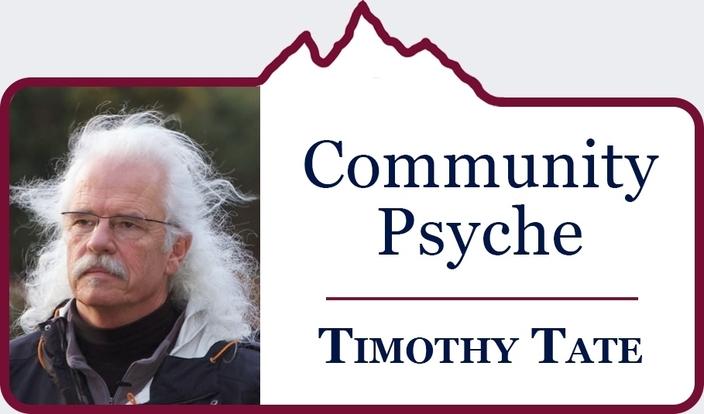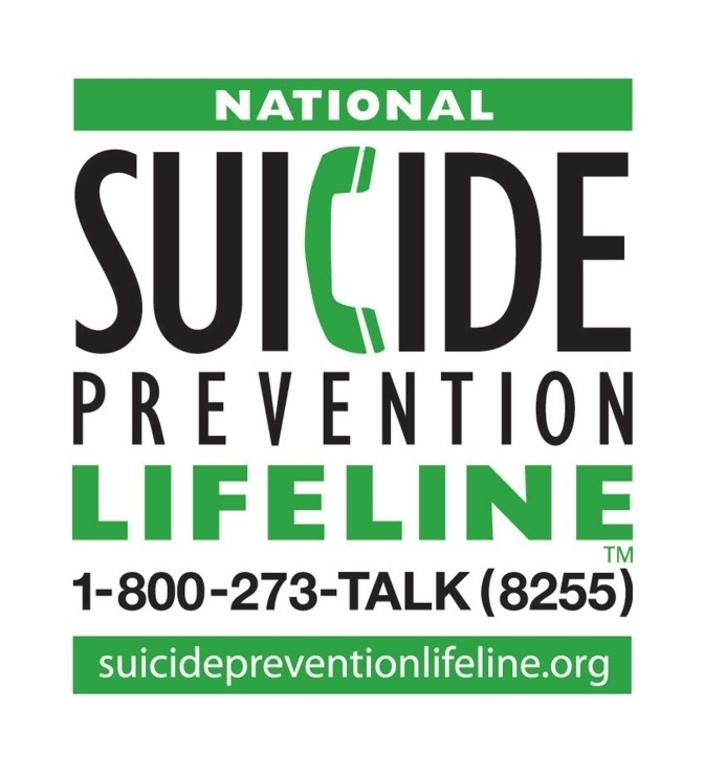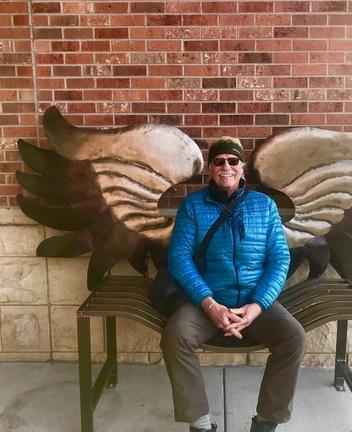Back to StoriesWhen People Become Lost, When Do You Intervene?
April 11, 2019
When People Become Lost, When Do You Intervene?Like Search and Rescue for those lost in the woods, people facing addiction or mental illness can also require the assistance of people who care
“The bitter habit of the forlorn cause
is my addiction. I miss it now, but face
ahead and go in my own way
toward my own place.”
From the poem: On Quitting a Little College by William Stafford in his collection
The Way It Is
If we see trouble brewing or self-destructive behavior happening or conduct in others that could be called dangerous, when is it right to intervene in another person’s life?
“Now” is the short answer.
Things don’t usually work out well when left to their own drift.
Yet who am I or you to come in between or intervene in another’s choices that leads to their demise?
Are we not responsible for our own fate? And who are you to intervene in my destiny?
Typically mental health practitioners, worried parents, or close friends initiate an intervention when the person they care about is off the rails, heading towards some fashion of self-destruction.
High risk behaviors like chronic alcohol dependency/addiction, drug addiction to the devil’s favorite, methamphetamine, opiates, big Pharma’s fav, or other street drugs from cocaine to heroin with multiple exits possible along the way down the drain, rattle those who care for, who love, the troubled soul in question.
In many mountain towns, chronic use of marijuana is currently enjoying a “pass” by most concerned since, according to those who rationalize, “it really does no harm.” That’s as true as suggesting any compulsion is harmless. It’s not. It will kill you kindly or roughly depending on how hell bent a guy or gal might be on their unique “road to ruin.”
Other psychoactive ingredients like DMT, psilocybin, LSD, ecstasy/molly, peyote, and ayahuasca continue to be ingested by those among us seeking an inspired breakthrough perspective on this mortal coil.
Many people struggle with the question of stepping in and sometimes, when tragedy happens, they live with guilt for looking the other way.
So let’s examine the exigencies that impinge on us ordinary folk and drive the bus of compulsion.
You see, the underlying force behind addiction is the “repetition compulsion.” Compulsion is the behavioral expression of one’s mental obsession, whatever it might be. Anxiety is what fuels this obsessive-compulsive lifestyle. It is easy for any of us to relate to the needs and demands of modernity that generate anxiety. This Age of Anxiety feeds the beast of addiction like dry pine fuels the campfire.
For instance, mothers might obsess over the safety of their children compulsively monitoring their behavior as in helicopter parenting. Or a partner might worry to the level of obsession with the amount and regularity of their spouse's nightly drinking, creating a tense home atmosphere. Or parents of teenagers might obsess about their drug use, creating a prison like home environment, which ironically turns out to motivate said feared behavior.
The other demon in play when it comes to addiction is the need for sensation. I want to feel differently than I do, to come down a bit, or to feel buzzed, or lighten my downtrodden spirit. “I just wanna get high.”
I want to feel another sensation rather than bored, depressed, anxious, or the mundane. Those of us who fall somewhere on the bipolar spectrum, be it bipolar I or bipolar II, are sensation freaks. The more of something the better. The faster and riskier the happier. The more forbidden and chastised the merrier. The more clever and secretive—as in catch me if you can— the more exciting.
Bipolarity and anxiety are often confused since they can present in a similar manic way: amplified accelerated speech, oppressive enthusiasm, and lurking dagger like rage.
“Oh my god, chill out!” “Take a chill pill, dude.” “Back off, man. Leave me alone.” “Don’t try to overwhelm me,” are common phrases employed when in the presence of such manic energy.
Of course such states are also addictive to be around and can be experienced as inspired or “rad” or impassioned. Odd how we—especially younger folk— use the term “sick” to refer to such brazen extreme behavior be it on the slopes or at an after party.
What is sick needs attention and how we bring attention to what is off in the other without it degrading either into passivity or overactive vigilance is at the heart of what we might mean by intervening.
As a licensed clinical professional counselor I have both the responsibility and license to intervene in a person’s life. The dramatic version of this right is to commit someone to a hospital or treatment facility, which over the course of 40 years I have had to do less than a dozen times. It is this dramatic scene of an individual escorted out of an emergency room or clinician’s office that might pop to mind first as what we mean by “intervention.”
Another iconic form of intervention is when family and friends of the cursed premeditate a moment in time when the subject of concern comes to said location and upon entering the room sees a host of intimate others awaiting his arrival.
A choreographed intervention commences with each of the loved ones sharing their particular concern, sadness, anger, frustration, and story with the individual’s addictive/compulsive behavior. This approach generates a united front that cannot be dismissed like a more isolated one on one approach can be. These encounters are unpleasant, terribly evocative, and usually effective in getting the intervened upon into treatment. That is unless the addict bolts out the door, or the transition to the treatment facility isn’t initiated immediately with a place reserved in the chosen facility, car ready in the driveway, or the flight booked for that afternoon.
I remember one time years ago when meth was first raising its ugly head that a concerned single mom with whom I had a counseling relationship called and expressed how her son was succumbing to the gravitational pull of meth addiction. It was clear to me, by what she shared, that it would be best that her next call was to the airlines to book a flight for her son that afternoon to stay with her brother, the kid’s uncle living across the country.
She made that call, booked that ticket, picked the kid up from high school and put him on the plane. It is a testament to her fortitude and his inner sense of the trouble he was in that this move worked. Some 25 year later he is a healthy productive member of our community.
Compulsive behavior, the kind we see in mountain towns with extreme sports, can tip over into addiction. Once addiction takes hold another level of trouble is in play, like the difference between Little League ball and pitching for the Cubs.
Since I am not an expert on addiction I plead some berth in considering its scope. As a front-line therapist I can speak to the escalating degrees, from compulsion to dependency to addiction, that I see in my office. Although this might be self-evident, the basic “addiction”, the seedbed of addiction brambles, is to be found in the psyche of the human sitting across from me. In other words, there are many opportunities to intervene in another’s life before the heroic type described above is the last resort.
I was disturbed to read the headlines in our local Bozeman Daily Chronicle on March 19, 2019. The alleged murder-suicide story recounted how two people, new to town, entered a downward vortex over the course of days leading to friends concern about what appeared to be delusional behavior compounded by what was described as a panic attack. These two young dead people carry a harsh story of a final chapter that concluded tragically and all too familiarly. I wonder how many opportunities existed along the way to such a deadly conclusion that were either missed or refused. Certainly the fellow who called on police to do a welfare check (582-2000) when the assumed shooter did not repeatedly answer his phone speaks to a “last ditch” effort. Such a call to police for a welfare check is a solid move that can be made much earlier in the perceived drama. This begs the question: when is the right time to intervene?
Can we trust a felt sense within our heart/mind to tell us when to speak up to people we know and love? Or is this a skill set that needs to be developed? Our rational minds look for an answer to perceived problems whereas our heart tells us when trouble or discord is afoot. I am confident that we have the requisite heart/brain sense to draw upon that recognizes disturbances within the psyche of friends and families. It seems to me that the challenge is not that we are unaware of loved ones overindulging, or bridled with depression, and or fits of elevated anxiety. It’s not like we don’t know how many empty beer cans, wine bottles or whiskey bottles are left around. We can sense when someone we love is chronically stoned or is slipping away, returning with a different affect. Yet it is challenging to intervene, to confront.
One of the tools I use in my private practice evolved over time and as a consequence my aging process: the ability to name what is happening in another’s life. Humanistic psychology has long trusted the tradition of repeating back to a person what has been heard by the counselor. “Let me get this right, is this what I hear you saying?” Sadly this technique too often becomes an approach leaving the client feeling like all the counselor is doing is repeating what has already been said. If we steer clear of “you” are this or that and own the first person perspective as in “I feel uncomfortable with how much you are drinking, smoking, or escalating every opportunity, etc. we remove the blame and broadcast the concern. This is entry level intervention.
The next level of intervention is to not enable the others troublesome behavior but to name the concern or consequences. Older athletes and ski bums can forget they are aging and jump from the couch up to the slopes and blow out a knee or back. We may or may not be our brothers' keepers but stating directly the consequences of such bravado might cause a moment of reflection rather than the alternative of “whatever.” This directness is not blunt “honesty” but rather a refined naming of and a compassionate conversation about the perceived trouble.
The need to intervene with those around us who either withdraw or present as desperate, depressed or suicidal brings another set of challenges to the table.
I know of outreach programs stemming from collaborations between mental health agencies and public schools to educate students on suicidal warning signs. I also know that parents and partners might benefit from some hands on straightforward assessment tools that would frame such tough conversations. Who can not be disturbed by the recent news of two survivors of the Parkland, Florida school shooting who apparently committed suicide within a one week’s time. The following link is a resource for an inventory developed by experts at Columbia University that might assist those of us who are motivated to initiate a level of intervention: https://cssrs.columbia.edu/wp-content/uploads/C-SSRS_Pediatric-SLC_11.14.16.pdf
The next step is when whacky, self-destructive behaviors take compulsive shape. Then we enter the “Come to Jesus” territory where “all bets are off.” There are times before a session that I suspect might have this crossroads in play that might require me to make calls to treatment facilities that I have used in the past to see if beds are available, Sierra Tucson (888) 466-1005, or I call the Hope House in Bozeman: Gallatin Mental Health Center 556-6500 to see if space is available. If I am with a Veteran in crisis I have VA’s primary clinic number handy 582-5300 and will have my cell phone at hand to speed dial 911. And there is our Help Center hotline to call for support or advise, 586-3333.
Such immediate interventions are rare, even though I have taken clients by the hand, escorting them to my pickup truck and driving them up to the emergency room at our local hospital. It is better to err on the side of intervention than it is to replay the drama that the poet Sharon Olds describes in the opening lines of her poem entitled Saturn.
“He lay on the couch night after night,
Mouth open, the darkness of the room
Filling his mouth, and no one knew
My father was eating his children. He seemed to
Rest so quietly, vast body
Inert on the sofa, big hand
Fallen away from the glass.
What could be more passive than a man
Passed out every night—and yet as he lay
On his back, snoring, our lives slowly disappeared down the hole of his life.”
Remember that “hope” is not an effective approach to trouble. Neither is disgust or shaming a helpful method of intervention. Good old fashioned honesty laced with an educated mind set, a dash of courage, and a working knowledge of current available resources are the gear we need to begin the journey towards a more authentic relationship with ourselves and those we love.






